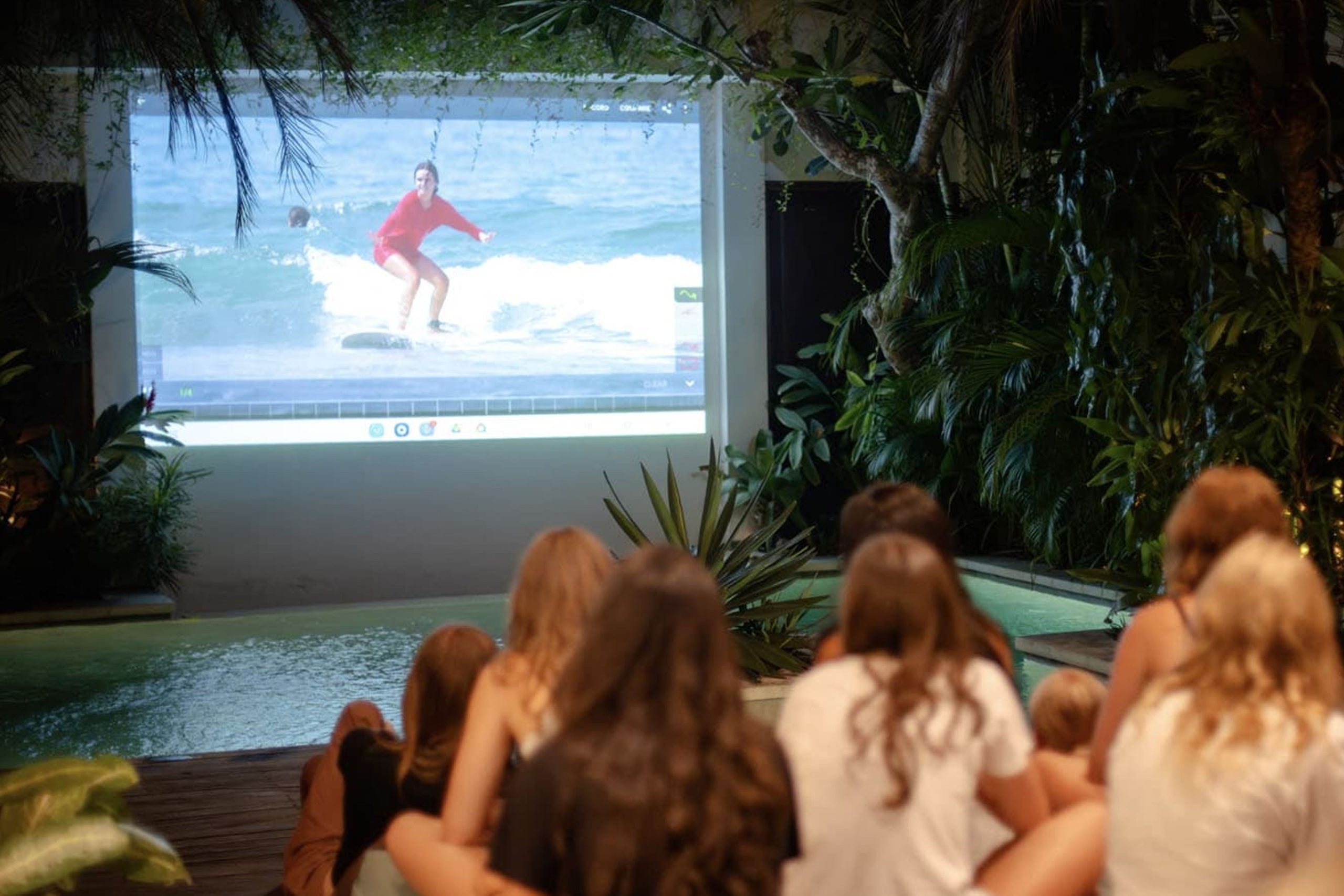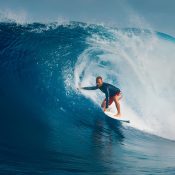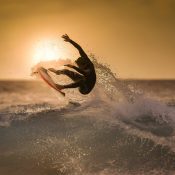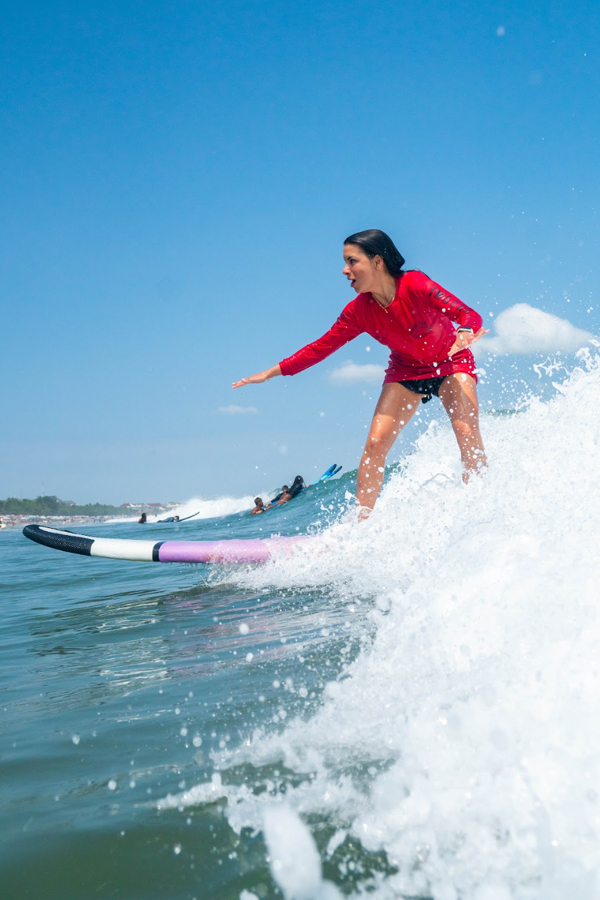Video Analysis Surfing: How It Supercharges Your Progress

Video Analysis Surfing: How It Supercharges Your Progress
You've put in the hours, watched the tutorials, and surfed until your arms felt like noodles. But your progress has hit a wall. You can feel something's off with your technique, but you can't quite pinpoint what it is. This is where video analysis surfing becomes your secret weapon. While you're focused on surviving the wave, the camera captures the truth about your technique. At Sōleïa Surf Camp Bali, we've seen students achieve in one session what used to take them months—simply by seeing themselves surf for the first time.
In this guide, we'll show you exactly how video analysis surfing works, why it's so effective, and how you can use it to fast-track your surfing journey.
Read also: Surf Progression Plan: From Whitewater to Green Waves
Table of Contents
Toggle1. What is Video Analysis Surfing?
Beyond the Feeling: Seeing Your Surfing Objectively
Video analysis surfing is the process of recording your surf sessions and systematically reviewing the footage with a trained coach to identify technical errors, reinforce good habits, and create a personalized improvement plan.
Why Your Brain Needs to See What Your Body Feels
- The Perception Gap: What you feel you're doing often differs dramatically from what you're actually doing
- Visual Learning: 65% of people are visual learners who understand concepts better when they see them
- Instant Feedback: Corrections happen immediately rather than days or weeks later
- Muscle Memory Reinforcement: Watching proper technique helps program your nervous system
2. The 5 Key Benefits of Video Analysis for Surfers
1. Identify Hidden Technical Flaws
Common invisible mistakes video analysis reveals:
- Poor pop-up technique (slow, staggered, or off-balance)
- Incorrect weight distribution during turns
- Looking down instead of where you want to go
- Stiff upper body limiting flow
- Paddling inefficiencies wasting energy
2. Accelerate Learning Curve 2-3x Faster
| Learning Method | Time to Correct a Bad Habit | Retention Rate |
|---|---|---|
| Verbal Feedback Only | 4-6 weeks | 30-40% |
| Video Analysis + Coaching | 1-2 weeks | 80-90% |
| Self-Learning (No Feedback) | 3-6 months | 10-20% |
3. Build Confidence Through Evidence
Seeing your small improvements week after week provides powerful motivation and confidence building.
4. Create Personalized Training Plans
Instead of generic advice, you get specific drills targeting your exact weaknesses.
5. Track Measurable Progress
What gets measured gets improved. Video provides undeniable proof of your progression.
3. What We Analyze: The Key Technical Elements
The Four Pillars of Surf Analysis
1. Paddling & Wave Entry
- Paddle technique and efficiency
- Wave selection and positioning
- Timing of the catch and pop-up initiation
2. Pop-Up Mechanics
- Hand placement and push-up power
- Foot placement and stance width
- Upper body and head position
- Fluidity and speed of the motion
3. Stance & Balance
- Weight distribution between feet
- Knee bend and center of gravity
- Arm position and upper body rotation
- Eye line and head position
4. Turning & Maneuvers
- Bottom turn initiation and execution
- Upper and lower body separation
- Speed generation and flow
- Completion of maneuvers
4. The Sōleïa Video Analysis Process
Our 4-Step System for Rapid Improvement
Step 1: Capture
- High-quality footage from beach and water angles
- Multiple waves to identify patterns
- Different conditions to assess adaptability
Step 2: Analyze
- Side-by-side comparison with pro surfers
- Frame-by-frame breakdown of key moments
- Identification of 2-3 priority fixes
Step 3: Correct
- Specific drills for each identified issue
- Dry-land simulations of proper technique
- Visualizations of correct movement patterns
Step 4: Integrate
- Immediate application in next surf session
- Focus on one correction at a time
- Follow-up filming to measure improvement
Sample Analysis Session Breakdown
| Time | Activity | Focus Area |
|---|---|---|
| 0-15 min | Surf Session 1 | Natural surfing without overthinking |
| 15-30 min | Video Review | Identify 2-3 key technical errors |
| 30-45 min | Dry-land Drills | Practice corrections on beach |
| 45-60 min | Surf Session 2 | Focused practice on 1-2 corrections |
Read also: The 5 Biggest Mistakes Slowing Your Surf Progression (And How to Fix Them)
5. Bali-Specific Video Analysis Advantages
Why Bali is Perfect for Video Analysis Surfing
- Consistent Conditions: Reliable waves mean consistent practice environments
- Clear Water: Excellent visibility for analyzing underwater phases
- Multiple Break Types: Ability to analyze technique across different wave types
- Professional Infrastructure: Experienced coaches and proper equipment
Best Bali Breaks for Video Analysis
| Break | Best For Analyzing | Why It Works |
|---|---|---|
| Kuta Beach | Beginner pop-ups and stance | Consistent, forgiving waves |
| Batu Bolong | Intermediate turning | Long, peeling walls |
| Berawa | Speed generation | Fast, challenging sections |
| Balangan | Flow and linking turns | Long left walls with multiple sections |
6. DIY Video Analysis: Getting Started on Your Own
Essential Equipment for Self-Analysis
- Smartphone or Action Camera: 1080p resolution minimum
- Waterproof Case: For in-water angles
- Tripod or Mount: Stable beach footage
- Video Analysis App: Coach's Eye, Hudl Technique, or simple slow-motion playback
How to Film Yourself Effectively
Beach Angles:
- Use a tripod for stable footage
- Film from multiple angles (front, side, behind)
- Zoom in to see specific body parts
Water Angles:
- Use a mouth mount or floating handle
- Maintain safe distance from other surfers
- Capture both takeoff and riding phases
What to Look For in Your Own Footage
- Compare your technique to professional surfers
- Look for the 3 most obvious technical errors
- Focus on one correction at a time
- Film regularly to track progress
FAQ: Video Analysis Surfing
Most surfers see significant improvement after 2-3 sessions. The first session identifies core issues, while follow-up sessions reinforce corrections and address new challenges.
Absolutely not! Beginners benefit tremendously from video analysis—it helps establish proper fundamentals from day one, preventing bad habits that are hard to break later.
A comprehensive session takes 60-90 minutes, including filming, analysis, and immediate application of corrections.
Conclusion: See Your Surfing, Change Your Surfing
Video analysis surfing isn't just about watching yourself surf—it's about creating a feedback loop that accelerates your learning in ways that feel impossible through sensation alone. The gap between what you feel and what you're actually doing is where progress gets stuck, and video analysis is the bridge across that gap.
Whether you're a beginner struggling with pop-ups or an intermediate surfer stuck on turning, seeing your surfing objectively provides the clarity needed for breakthrough improvement. The camera doesn't lie, and it's this honest feedback that creates transformational change.
At Sōleïa Surf Academy, we've integrated video analysis surfing into all our coaching programs because we've seen firsthand how it turns frustration into progression and hope into results.
Ready to see your surfing through new eyes?
Recent Posts
How to Choose the Right Surfboard: Ultimate 2026 Guide
Intermediate Surfer Skills: 7 Key Areas to Master Next
Surf Levels: How to Understand Where You Are with Your Surfing
Start From € 5125,-
Our 12-weeks
Surf Academy Program in Bali




